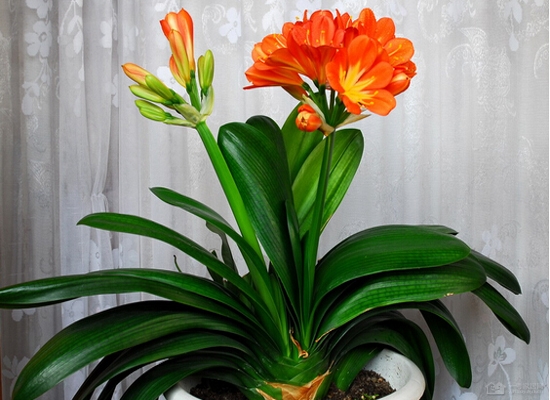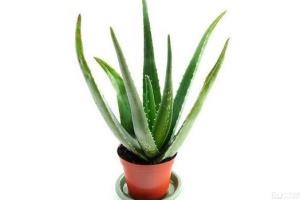What about the yellowing leaves of Cymbidium? different treatment methods should be adopted in different situations.
Orchids represent elegance in traditional culture, especially named after a gentleman, and it is the embodiment of high taste. Therefore, the orchid has become an important choice of household plants, especially the decoration of Chinese home style, which can set off the elegant atmosphere of traditional culture. However, problems often arise in the cultivation of orchids, for example, what if the leaves of orchids turn yellow?

Cymbidium is a perennial herb of the genus Amaryllidaceae, which is a semi-negative plant, which likes to cool and avoid high temperature. The suitable temperature for growth is 15-25 ℃, and it stops growing when it is lower than 5 ℃. It has high ornamental value. However, if the leaves of Cymbidium turn yellow, then its ornamental value will be greatly reduced. For this situation, we have to prescribe the right medicine to be effective.
First, the common reasons for the yellow leaves of Cymbidium
① tanning yellow: the leaves will burn and turn yellow when the sun is strong, so keep them in a semi-shaded place.
② tide yellow: the gentleman orchid for the fleshy root basin to keep a little damp, too much water to hurt the root leaves will turn yellow.
③ hungry yellow: lack of fertilizer leaves yellowing, gentleman orchid once every half a month to apply dilute nitrogen fertilizer; do not apply fertilizer in summer season to avoid root damage. If it belongs to the above reasons, as long as careful maintenance, at this time, trim the yellowing leaves of the gentleman orchid. It should be noted that the scissors should be roasted and sterilized on fire, and then cut off the yellow leaves, but do not tear them.
Second, the leaves of Cymbidium are yellow, and the middle leaves are black and rotten.
If the middle small leaves are black and rotten, we need to make a further judgment, break apart the two leaves and look at them. If the gap between the leaves is blackened and festering juice flows out. It can be judged that the formed gentleman orchid arrow did not have time to grow out of the leaves and rot directly in the middle of the leaves.
There are many reasons for flower and arrow rot: one is that too much water is sprayed in the hands of the florist, causing sewage to flow into the crevice and lead to bacterial infection, and the other is due to careless watering that causes sewage to splash into the crevice and cause rot.
Consequence: under normal circumstances, it will not affect the life of the magnolia, but if it is in high temperature and humidity, it is very easy to wipe your head and rot the whole plant.
Treatment: toilet paper or facial Jack paper can be used to absorb rotten juice, use appropriate methods to remove dirt that can be cleaned, and usually keep the environment relatively dry, it is recommended to use basin watering method.
Third, all the leaves of Magnolia turn yellow
All yellowing is often a symptom of daily fever. The solution is to shade immediately and cut off the yellow leaves.
Fourth, the leaves of Cymbidium are withered and yellow and drooping.
The withered or drooping leaves are a symptom of lack of water. Watering should grasp the principle of no dry, no watering, no stagnant water in the basin.
Fifth, the leaves of Cymbidium are partially yellowed.
Local yellowing is likely to be roasted by fire, blown by cold wind, scalded by water and eroded by acid. You can rule out external causes in time. Sometimes, the lack of nitrogen fertilizer may cause plants to suffer from chlorosis. The decrease of chlorophyll causes the leaves to turn yellow. In this case, fermented cake fertilizer and water can be added.
6. the leaves of Cymbidium are wrinkled and yellow spots.
Excessive fertilization causes root burning. The soil should be changed immediately, and the roots should be soaked in 0.1% potassium permanganate aqueous solution for 20-30 minutes, then rinsed with clean water, dried, cut off the rotten roots, and replanted with plant ash on the wound.
7. The outer two leaves of Magnolia turn yellow
This is a normal new layer metabolism, which only needs to be pruned off the outer 2 leaves.
8. The leaves of Magnolia appear grayish yellow
The reason for the grayish yellow leaves of Cymbidium is mainly due to the strong direct sunlight and the need for shade.
9. The leaves of Cymbidium appear yellowing symptoms.
Due to lack of light, the magnolia will be yellowed. Fluorescent lamps can be used to supplement lighting in the room.
Ten. The leaves of Cymbidium are yellow and weak.
The yellow and weak leaves are lack of fertilizer. Thin fertilizer should be applied frequently; the yellowing of leaves is native and impermeable. Rotten leaf soil or pine needle soil should be replaced.
11. The yellowing of the lower leaves causes rotting roots
① uprooted the magnolia by the roots.
② cut off the old and rotten leaves with a beauty knife.
③ cut off the rotten roots and old roots with scissors.
④ mixed the spray bottle with 3:5 water and chlorothalonil.
⑤ moved the orchid back into the basin.
⑥ is watered with rooting water and nutritious water.
⑦ was watered about twice a month for 5 months.
After 5 months of ⑧, water was irrigated about 4 times a month for 2 months.
⑨ returned to normal watering times.
It can be seen that there are many reasons why the leaves of Cymbidium turn yellow. Therefore, we need to find out the cause of leaf yellowing, and then prescribe the right medicine, otherwise, the result may be counterproductive.
- Prev

Cultivation techniques of Spiraea przewalskii Reproduction method of Spiraea
Cultivation techniques of Spiraea przewalskii Reproduction method of Spiraea
- Next

Family farming pays attention to details aloe potted plant matters needing attention
Family farming pays attention to details aloe potted plant matters needing attention
Related
- Wuhan Hospital Iron Tree Blooming Result Was Instantly Frightened by the Gardener Master
- Which variety of camellia is the most fragrant and best? Which one do you like best?
- What is the small blue coat, the breeding methods and matters needing attention of the succulent plant
- Dormancy time and maintenance management of succulent plants during dormancy
- Minas succulent how to raise, Minas succulent plant pictures
- What are the varieties of winter succulent plants
- How to raise succulent plants in twelve rolls? let's take a look at some experience of breeding twelve rolls.
- Attention should be paid to water control for succulent plants during dormant period (winter and summer)
- Watering experience of twelve rolls of succulent plants
- Techniques for fertilizing succulent plants. An article will let you know how to fertilize succulent plants.

